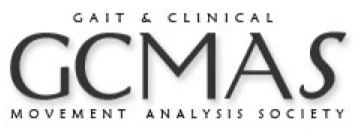Kat Steele presents at Gait & Clinical Movement Analysis Society Conference:
Quantifying altered muscle properties with ultrasound elastography and musculoskeletal simulation
Newark, DE (June 24-27, 2014)

Kat Steele presents at Gait & Clinical Movement Analysis Society Conference:
Quantifying altered muscle properties with ultrasound elastography and musculoskeletal simulation
Newark, DE (June 24-27, 2014)

Sabrina Lee presents at Gait & Clinical Movement Analysis Society Conference:
Use of shear wave ultrasound elastography to quantify muscle material properties in individuals with cerebral palsy
Newark, DE (June 24-27, 2014)

Kat Steele presents at Gait & Clinical Movement Analysis Society Conference:
Changes in muscle synergies are independent of altered biomechanics during gait
Newark, Delaware (June 24-27, 2014)

Kat Steele presents at Gait & Clinical Movement Analysis Society Conference:
Muscle synergy complexity reflects selective motor control in children with cerebral palsy
Newark, DE (June 24-27, 2014)

Hwan Choi presents at Northwest Biomechanics Symposium:
Using musculoskeletal modeling to evaluate changes in gastrocnemius length with different ankle foot orthoses
Salem, OR (May 16-17, 2014)